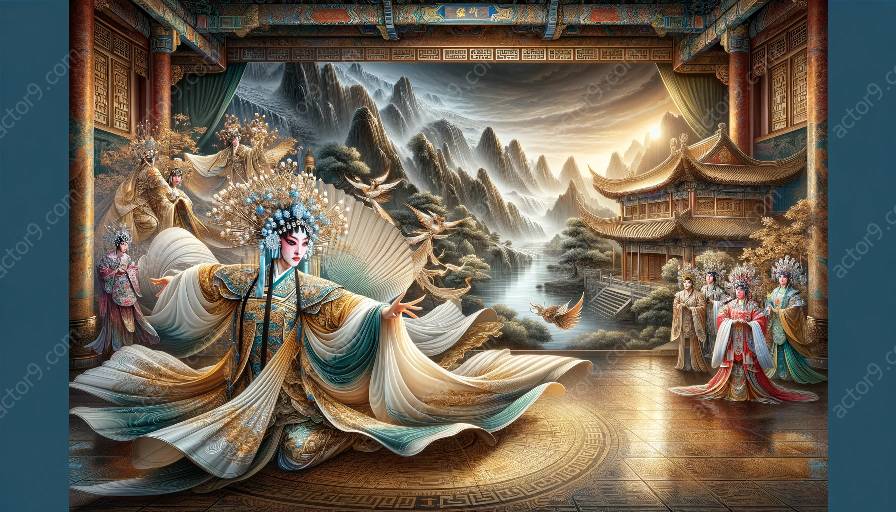Peking Opera, an ancient form of Chinese opera dating back to the 18th century, is renowned for its vibrant blend of music, dance, and acrobatics. Theatrical elements and stagecraft play a crucial role in bringing this traditional art form to life. In this topic cluster, we'll delve into the intricate techniques and acting methods used in Peking Opera, exploring how performers use their skills to captivate audiences and convey compelling narratives.
Peking Opera Techniques
Before diving into the specific theatrical elements and stagecraft in Peking Opera, it's essential to understand the foundational techniques that define this art form. Peking Opera incorporates a range of performance skills, including singing, acting, martial arts, and acrobatics. These techniques are honed through years of rigorous training, with performers mastering the art of portraying different characters and emotions while seamlessly blending various performing arts disciplines.
Character Portrayal
One of the key aspects of Peking Opera techniques is the art of character portrayal. Performers undergo extensive training to embody the mannerisms, gestures, and vocal nuances associated with specific roles. Whether portraying heroic warriors, cunning villains, or virtuous maidens, the actors meticulously study the distinct movements and vocal styles that define each character archetype. Through elaborate costuming, makeup, and stylized movements, they bring these characters to life on stage, captivating audiences with their compelling portrayals.
Musicality and Vocal Expression
The musicality and vocal expression in Peking Opera are integral to its theatrical elements. Singing in Peking Opera involves intricate vocal techniques, characterized by a unique blend of melodic ornamentation and stylized delivery. Performers undergo training to master the distinctive vocal styles and vocal intonations specific to Peking Opera, enabling them to convey emotions and narratives through their singing. The combination of music, lyrics, and vocal performance adds depth and emotional resonance to the storytelling in Peking Opera.
Movement and Martial Arts
Another defining feature of Peking Opera techniques is the incorporation of movement and martial arts. Performers undergo rigorous physical training to master the acrobatic and combat skills necessary for portraying dynamic fight sequences and choreographed movements on stage. The seamless integration of martial arts techniques adds a visually captivating element to Peking Opera performances, enhancing the spectacle and excitement of the storytelling.
Acting Techniques
Acting in Peking Opera requires a nuanced approach that combines traditional acting methods with the unique characteristics of this art form. Performers utilize a range of acting techniques to convey emotions, portray characters, and engage with the audience, creating a multi-dimensional theatrical experience.
Emotional Expression and Gestures
The use of gestures and facial expressions is a fundamental aspect of acting in Peking Opera. Performers employ a rich repertoire of hand movements, facial expressions, and body language to convey a character's emotions and intentions. Each gesture and expression is imbued with symbolic meaning, allowing performers to communicate complex emotions and narrative elements to the audience.













































